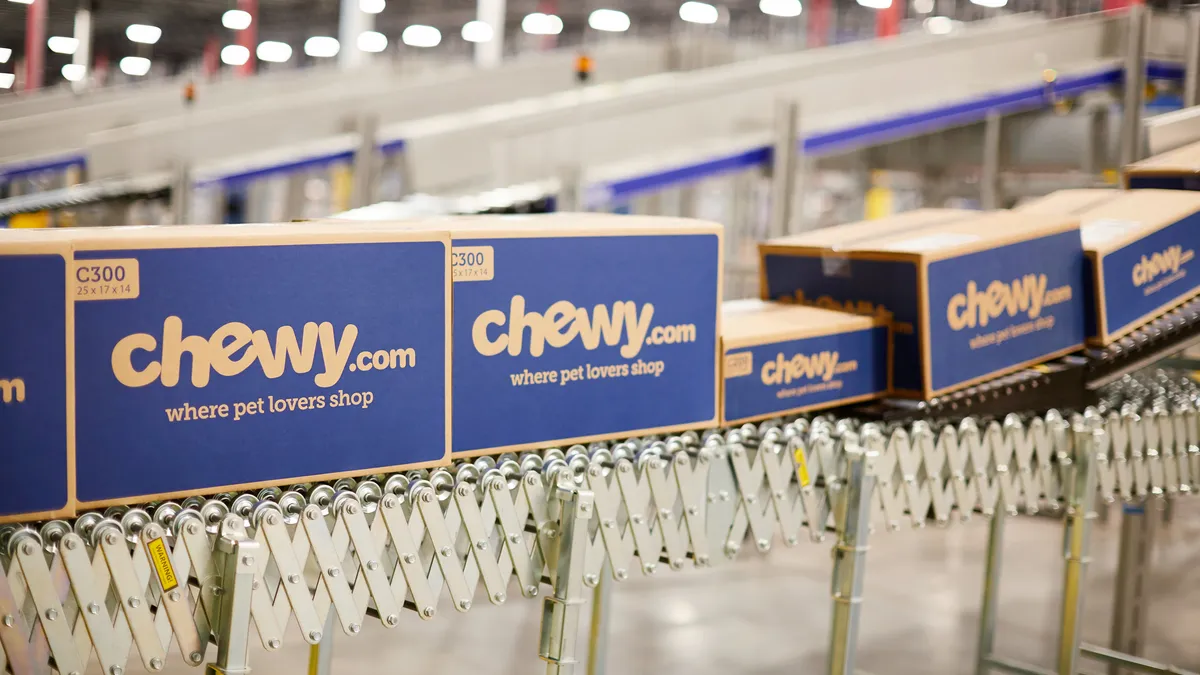Dive Brief:
- Chewy’s sales rose 12.8% in the second quarter to $2.4 billion even as executives said on an earnings call that customer acquisition rates have come under pressure from softer demand.
- The company’s net margin, while slim at 0.9%, rose 170 basis points from last year. The online pet supplies retailer’s net income came in at $22.3 million compared to a loss of $16.7 million last year.
- For the first half of the year, Chewy’s profits have nearly doubled to $40.8 million compared to $22 million in the same period last year.
Dive Insight:
Chewy’s modest profits and razor-thin margins are no small matter for a retailer that has posted an annual loss for every year that it has publicly reported financials, going back to fiscal 2018.
Chewy has managed that feat against a very difficult consumer environment. CEO Sumit Singh told analysts that prices increased across the pet category in Q2, causing consumers to curtail some purchases.
“Even as consumers pull back in select areas, Chewy outperformed industry trends on the strength of our market leadership in nondiscretionary recurring revenue categories like food and health care, the product categories that are most important to pet parents,” Singh said.
The Chewy chief attributed the company’s 13% top-line increase to its ability to drive demand in those non-discretionary pet categories, which account for 80% of Chewy’s business. That customer demand, Singh added, is “anchored by the superior value proposition that we offer pet parents and the predictable nature of our Autoship program.”
Increasing gross margins were the result of rising prices and a growing spread between price and cost, with fuel costs easing and the company’s supply chain and logistics capabilities increasing, according to Singh.
GlobalData Managing Director Neil Saunders noted that one of the strengths of Chewy’s model is that “most of what it sells is bought habitually,” with subscriptions-based and automatic recurring purchases through Autoship accounting for 73.1% of the company’s sales.
“This model is excellent at generating recurring revenue with minimal marketing spend — a very different proposition to most consumer goods which are bought on a discretionary basis,” Saunders said in emailed comments.
Chewy also got a big boost from the boom in pets during the pandemic. Gross customer additions in Q2 were up by mid-single digits from the same period in 2019 “even as softer demand across discretionary categories put some pressure on customer acquisition,” Singh said.
He noted that retention rates from the earlier pandemic years of 2020 and 2021 are lower than in the past, but so far Chewy’s makeup of new customers this year is more consistent with pre-pandemic customers’ long-term retention profiles.
As it gets larger, Chewy has launched a third automated fulfillment center, in Nevada, as well as a second import routing facility on the East Coast, and grew its Chewy Freight Services middle mile network. All of that is aimed at smoothing and speeding up logistics and delivery, which is crucial to the company’s proposition.
“Part of its success relies on Chewy’s excellent customer service which ensures orders are efficiently managed and delivered on time, with speedy and satisfactory problem resolution when issues arise,” Saunders said.
Chewy is also expanding into pet health services, with the launch of the CarePlus wellness and insurance program, which at the time of its earnings release was up and running in 31 states. The company has grown its Practice Hub e-commerce platform for veterinarians to 1,000 practices, more than three times the number in March, Singh said.












